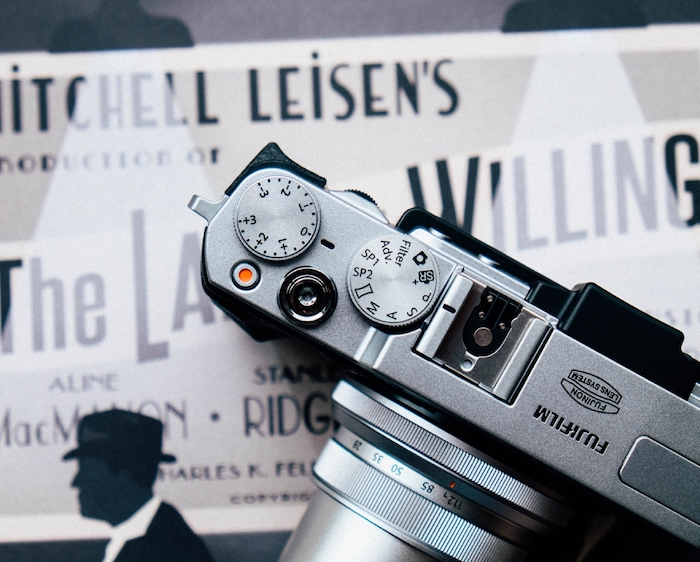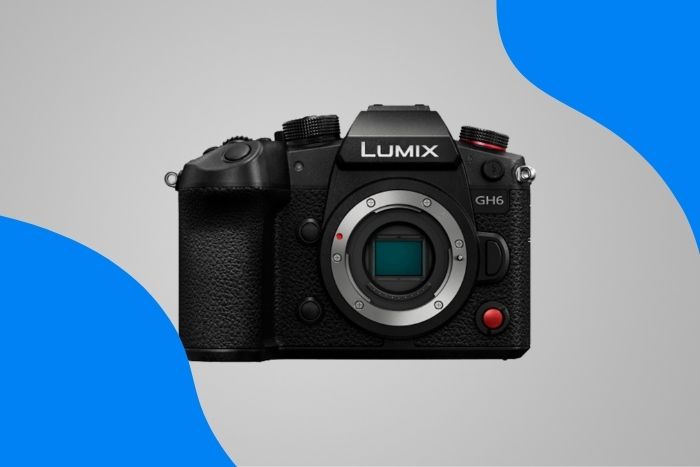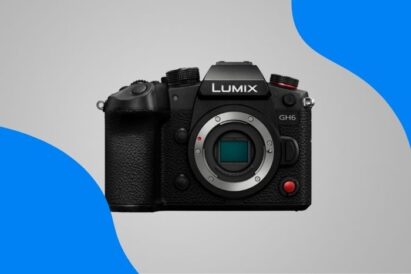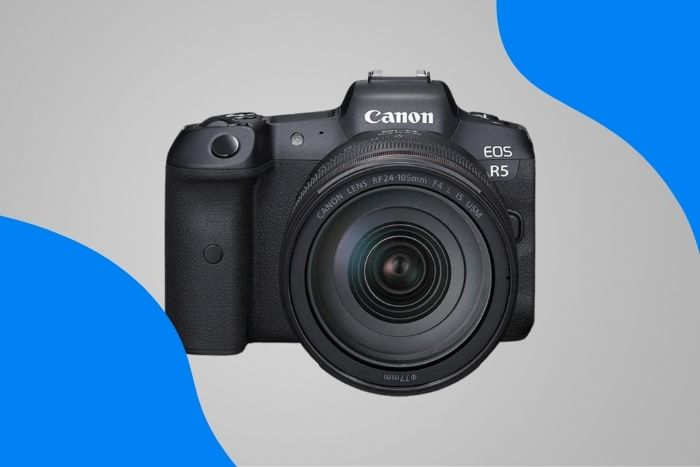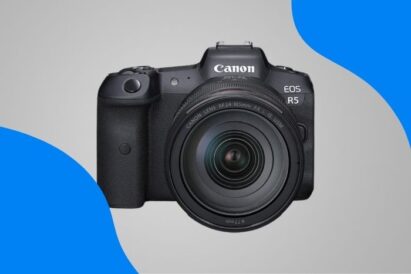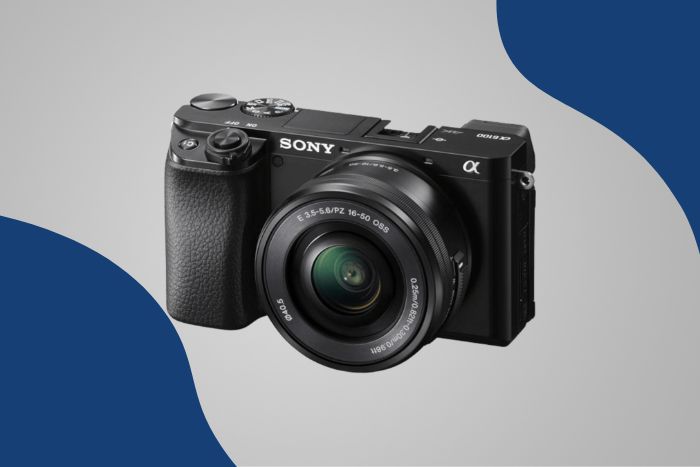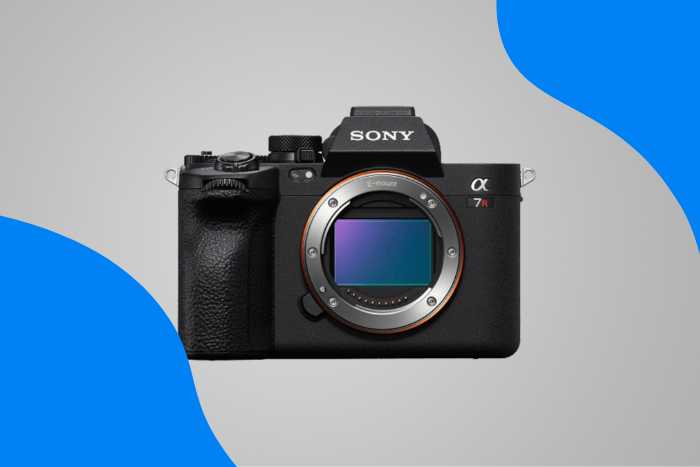My wildlife photography niche is not one Fuji serves very well in terms of sensor size and autofocus capability, but I’ve been a professional photographer for almost ten years. I’ve owned four DSLRs, an underwater camera, a GoPro, and two full-frame mirrorless cameras, so I do have some pretty extensive camera knowledge!
I’ll do my best to be objective in analyzing the features and benefits Fujifilm cameras offer and what kind of photographers they suit best.
Fujifilm has been around since 1934. Its versatile cameras have a reputation for being stylish and enjoyable to use. The range is particularly strong for APS-C cameras and medium format cameras.
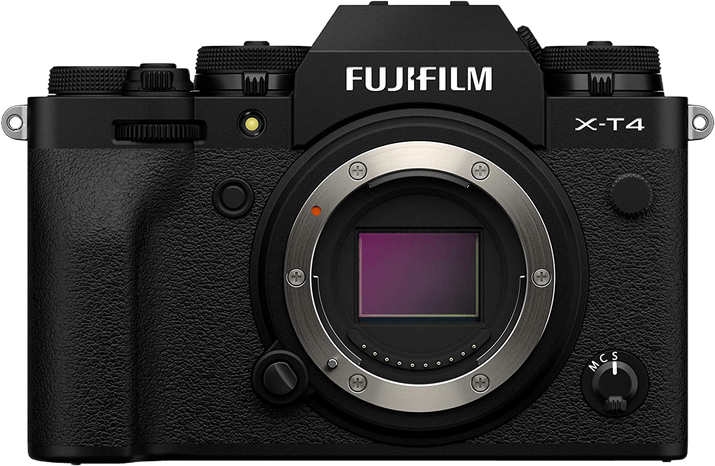
Fujifilm X-T4
Frequent firmware updates continuously improve the kit on the market, and there are regular new product launches. There are also plenty of lenses that offer excellent sharpness at an affordable price.
It would be easy to write this review, focusing too much on the technical specifications. But Fuji manages to turn their cameras into objects of desire that make photography enjoyable—and that’s their true value.
So what is the best Fujifilm camera for you?
What Makes Fuji Cameras so Good?
Fujifilm makes compact, X-mount mirrorless, and medium format cameras rather than DSLRs. The company is constantly releasing new models and firmware updates with extra features. And it has an excellent range of sharp but lightweight lenses for every product line.
The Fuji compact and X-mount cameras are built around a 24.4 or 26.1 MP APS-C sensor. They are generally very light, making them suitable for travel, reportage, and generalist photographers. They also have a retro vibe that makes them look quite stylish. This is particularly true for the rangefinder-style bodies, with a two-tone silver and black finish.
The GFX cameras have either a 51.4 or 102MP sensor, which means they’re more suitable for genres of photography that place a premium on image quality, such as portraits, weddings, and landscapes.
Fuji cameras usually have top-mounted dials to control shutter speed and exposure compensation, plus an aperture dial on most X-series lenses. However, they also make the most of touchscreen technology in their rear LCD screens to make the menus and autofocus system as user-friendly as possible.
Most photographers shoot in RAW these days—and for a good reason. But one of Fuji’s strengths is the quality and color rendition of the JPEG images you can get straight out of the camera without further processing.
You can also take advantage of over a dozen JPEG Film Simulation modes that mimic the “look” of films from the past, such as Provia, Velvia, and Astia. You can even program your own “recipe” by pressing the Q button and entering the parameters in the Image Quality (IQ) menu.
If you’re a videographer, most Fujifilm models allow you to shoot 4K DCI or UHD video at 23, 24, 25, or 30p. And there are some clever features such as HDR and the “digital gimbal” that make shooting stable videos that much easier.
Fuji cameras aren’t the best option for wildlife or sports photography. The autofocus is perhaps not as fast or accurate as other camera brands such as Sony. And the continuous shooting speed is sometimes disappointing—but it’s still pretty good compared with DSLR models such as the Nikon D850.
If you’re not desperate for a DSLR, Fuji makes a range of fun and enjoyable cameras that can cope with a range of shooting scenarios and bring back some of the style and glamour of film cameras from the past.
What is the Best Fujifilm Camera for you?
Before we discuss each camera in detail, here are my recommended 10 best Fujifilm camera options:

- 4K video (DCI or Ultra HD) up to 60p and added features
- 12 Film Simulation modes
- A great frame rate of 15fps

- A tilting flip-out screen for waist-level shooting
- 26.1MP APS-C sensor provides good image quality
- 30 fps (with a 1.25x crop)
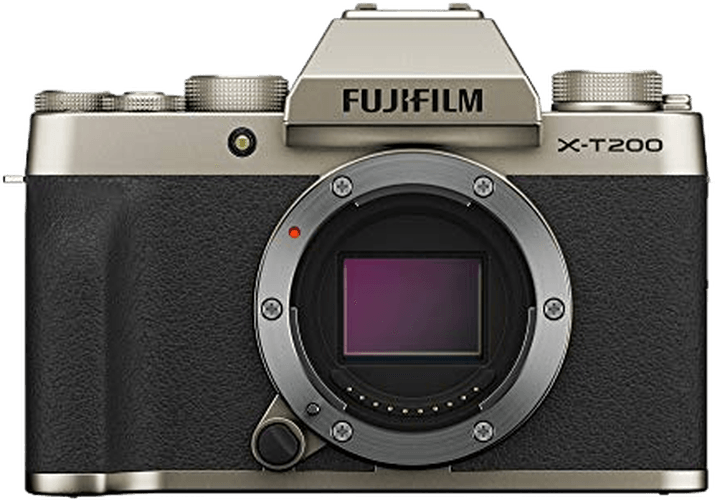
- Low noise levels and good detail
- Large, bright touchscreen
- "Digital gimbal" for 1080/30p footage
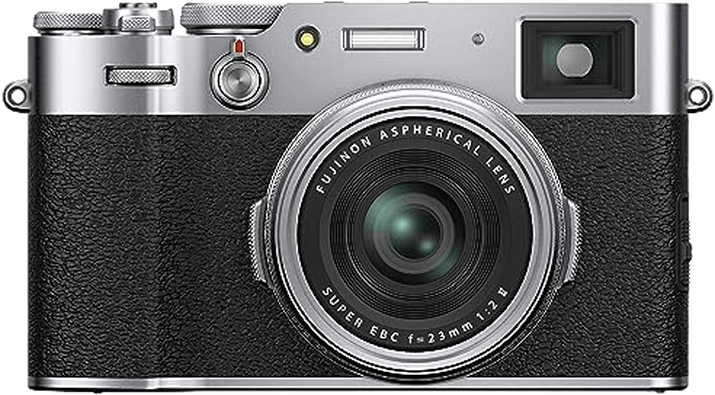
- Good noise reduction and fast readout
- Various Film Simulations
- Hybrid optical/electronic viewfinder
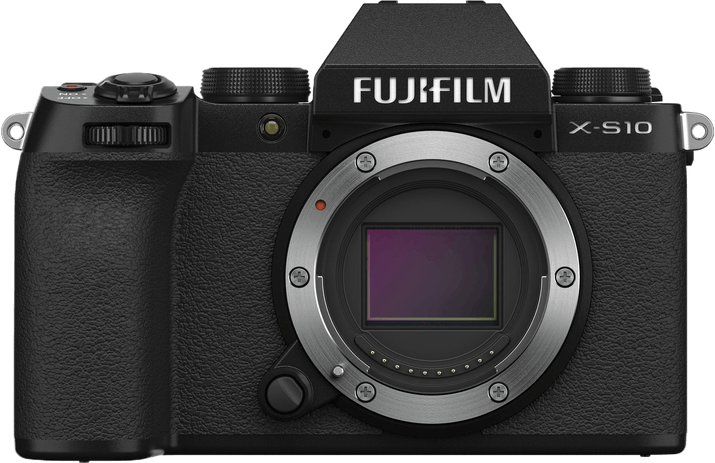
- Stunning image quality
- Good ergonomics
- 4K UHD video capture with Log recording
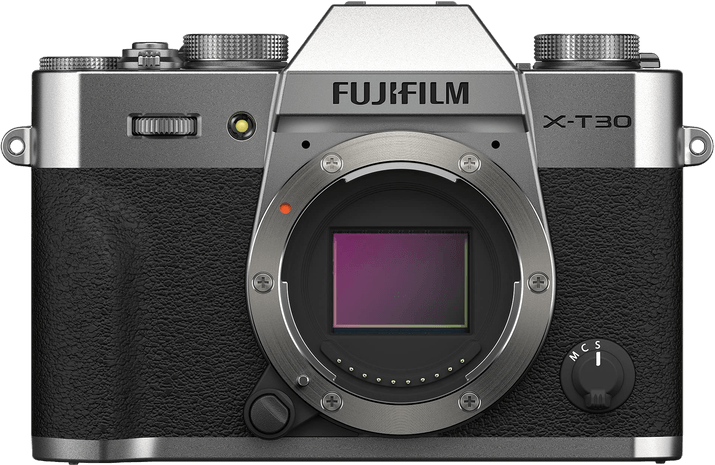
- Retro, black-and-silver look
- Small and light
- Up to 30 fps with 1.25x crop
- Affordable

- Impressive image quality
- 18 Film Simulation modes
- Classic styling
- Tilting touchscreen

- Outstanding image quality
- Image stabilization
- Good ergonomics
- Good level of customization
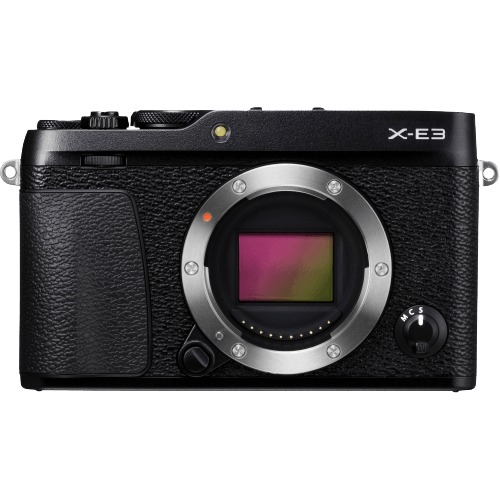
- Excellent image quality, especially JPEGs
- Only weighs 11.9 oz (337 g)
- 15 Film Simulation modes
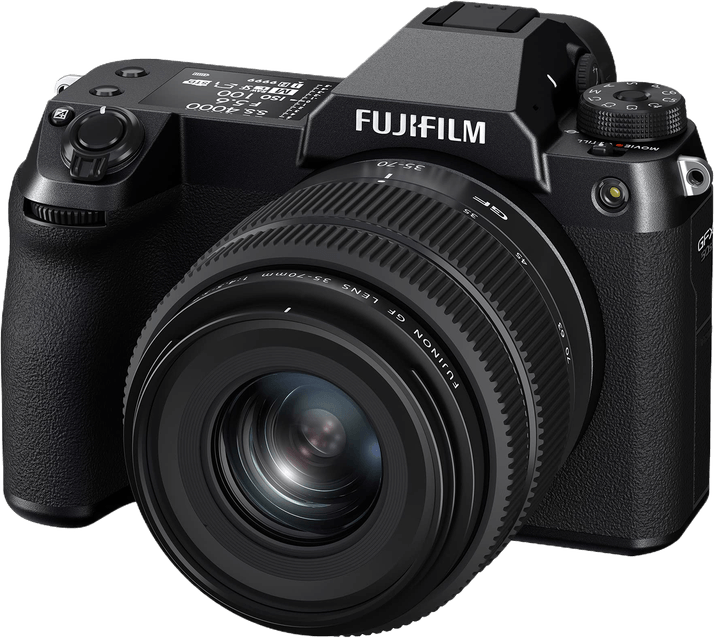
- Best image quality from a Fujifilm camera (apart from the GFX100S)
- Film Simulation modes
- Small and relatively light
10 Best Fujifilm Cameras in 2023 (in Detail!)
There are several different ranges of mirrorless Fujifilm cameras, and the naming conventions can be confusing! Here’s your guide to all the best models.
1. Fujifilm X-T4

| Camera Type |
Camera Type
|
| Megapixels |
Megapixels
26 MP |
| Sensor Format |
Sensor Format
|
| Sensor Size |
Sensor Size
23.5 x 15.6 mm
|
| Frame Rate |
Frame Rate
20 fps |
| Autofocus Points |
Autofocus Points
425 |
- Decent APS-C BSI-CMOS sensor
- A great frame rate of 15 fps
- 6.5 stops of image stabilization
- 4K video (DCI or Ultra HD) up to 60 fps
- A fully articulating rear touchscreen
- 12 Film Simulation modes
- Expensive for an APS-C camera
- Autofocus speed and accuracy depends on the lens and the subject
- Unreliable face and eye detection
- No external battery charger provided
- Limited video recording time
- No subject tracking in video mode
The Fujifilm X-T4 is probably the best Fuji camera on the market today. It’s expensive for an APS-C crop sensor model. But it will perfectly suit a photographer or videographer who likes the look and feel while avoiding the heavier body and lenses of a DSLR.
The sensor size is reasonable at 26 MP, and the continuous shooting speed ranges from 8 to 30 fps—if you don’t mind the lower-quality file format. The only limiting factor is the autofocus system, which is unreliable.
The Fujifilm X-T4’s video specs are also the best of all the Fuji cameras. You can shoot a 4K video with it. And there is a barrage of features such as zebra stripes, punch-in recording, focus peaking, line-level mic input, and corrected log preview.
Have a look at these trending spec comparisons with the X-T4 before you choose:
- Fujifilm X-T4 vs Sony a7 IV
- Fujifilm X-T4 vs Nikon Z9
- Fujifilm X-T4 vs Sony a7R IV
- Fujifilm X-T3 vs X-T4
2. Fujifilm X-Pro3

| Camera Type |
Camera Type
|
| Megapixels |
Megapixels
26 MP |
| Sensor Format |
Sensor Format
|
| Sensor Size |
Sensor Size
23.5 x 15.6 mm
|
| Frame Rate |
Frame Rate
11 fps |
| Autofocus Points |
Autofocus Points
117 |
- Good image quality
- 30 fps (with a 1.25x crop)
- Hybrid optical/electronic viewfinder
- Tilting flip-out screen works well for waist-level shooting
- 4K / 30p Ultra HD video
- 11 film simulations
- Optical viewfinder doesn't work properly with wide or long lenses
- Face and eye detection are unreliable
- Hard to switch focus from near to far
- Limited LCD angles prevents use above eye level
- Slow-to-focus f/1.4 lenses
- Low-resolution LCD
The Fujifilm X-Pro3 is a version of the X-T3 APS-C mirrorless camera with a hybrid viewfinder and hidden rear screen aimed at the “purist.” That means either a waist-level street photographer or someone who prefers using an optical viewfinder.
The design makes it look like a classic rangefinder. And Fuji’s marketing focuses heavily on nostalgia, character, and history. It’s available in black and Duratect-coated black and titanium, as the look and feel are obviously important.
If you don’t happen to be in the target market, you might be better off with the X-T3. However, it does provide excellent image quality, fast frame rates, 4K video, and various typical Fuji Film Simulations.
3. Fujifilm X-T200

| Camera Type |
Camera Type
|
| Megapixels |
Megapixels
24 MP |
| Sensor Format |
Sensor Format
|
| Sensor Size |
Sensor Size
23.5 x 15.6 mm
|
| Frame Rate |
Frame Rate
8 fps |
| Autofocus Points |
Autofocus Points
425 |
- Great image detail with little noise
- Good colors in JPEGs
- Helpful face and eye detection
- Large, bright touchscreen LCD
- Mic and headphone sockets
- High-quality, 4K Ultra HD video
- Only 8 fps continuous shooting
- Small continuous shooting buffer
- Limited custom options
- Short 270-shot battery life
- No subject tracking shooting video
- Full HD video lacks sharpness
The Fujifilm X-T200 is our choice for the best beginner Fujifilm camera. It’s a scaled-down version of the APS-C X-T30 mirrorless camera with a large, 3.5″ (8.9 cm) 16:9 fully-articulating rear screen with 2.76m dots. It’s aimed at beginners, and the touchscreen functionality will have a familiar look for photographers hoping to upgrade from their smartphones.
Smartphones are available in various colors, and the Fujifilm X-T200 has similar options—dark silver, silver, and champagne gold. It’s also tempting to view Fuji’s Film Simulations as the in-camera equivalent of Instagram filters!
The 4K video looks much better than the 1080 footage. However, the “digital gimbal” mode reduces camera shake, and there’s an HDR feature that reduces contrast.
This is an affordable, user-friendly camera for people just starting on their photographic journey.
4. Fujifilm X100V

| Camera Type |
Camera Type
|
| Megapixels |
Megapixels
26 MP |
| Sensor Format |
Sensor Format
|
| Sensor Size |
Sensor Size
23.5 x 15.6 mm
|
| Frame Rate |
Frame Rate
11 fps |
| Autofocus Points |
Autofocus Points
425 |
- 26 MP sensor for good noise reduction and fast readout
- Sharp JPEGs with low noise
- 15 quality film simulations
- Hybrid optical/electronic viewfinder
- Tilting touchscreen
- Excellent 4K Ultra HD video
- Slow AF and poor with optical viewfinder
- Lacks in-body image stabilization
- Limited customization
- Complicated menus
- Optional weather sealing costs extra
Fujifilm started producing the X100 series before their X-mount interchangeable lens cameras, and the formula has proved very successful. The design recalls the old rangefinder cameras. But that doesn’t come at the expense of image quality, autofocus capabilities, or video features.
The latest model X100V is more expensive. But it justifies the premium with a new and much-improved lens, touchscreen control, a tilting rear screen, and an excellent range of video features.
Yes, there are still fundamental problems focusing with the hybrid viewfinder. And you might think that DSLRs and mirrorless cameras have solved those in a much better way.
The Fujifilm brand is built on enjoyment, and the combination of look and feel and performance makes this the best fixed-lens compact in the line-up.
If you’re interested in the X100V, check the following comparisons:
- Fujifilm X100V vs Sony ZV-1
- Canon EOS R10 vs Fujifilm X100V
- Fujifilm X100V vs Sony a7 III
- Fujifilm X100V vs Sony DSC-RX1
- Fujifilm X100V vs Sony a7C
5. Fujifilm X-S10

| Camera Type |
Camera Type
|
| Megapixels |
Megapixels
26 MP |
| Sensor Format |
Sensor Format
|
| Sensor Size |
Sensor Size
23.5 x 15.6 mm
|
| Frame Rate |
Frame Rate
20 fps |
| Autofocus Points |
Autofocus Points
425 |
- Stunning image quality
- Good ergonomics
- 5-axis in-body stabilization
- 30 fps with crop or 20 fps without
- 4K Ultra HD with good dynamic range
- Wi-Fi and Bluetooth connectivity
- Subject tracking is not good enough for sports or action shots
- Few custom buttons
- Small viewfinder
- Only one UHS-I memory card slot
- Poor 325-shot battery using the LCD
Fujifilm describes the X-S10 as taking the internal mechanics from the X-T30 and the design and in-body stabilization from the X-H1. It’s good for portraits, landscapes, studio shoots, and run-and-gun video but is less suited to capturing fast action due to problems with autofocus tracking.
It’s not a typical Fujifilm camera. It has separate, customizable dials rather than the dedicated shutter speed, aperture, and exposure compensation controls on other cameras like the Fujifilm X-T30 and X-T4. It’s a question of personal taste, but Fujifilm has obviously decided that not everyone buys into their retro vibe!
Apart from that, RAW image quality is good, with plenty of detail and dynamic range. The default Provia JPEGs also provide nice color straight from the camera.
The video performance is essentially the same as you get with the X-T30. You can shoot oversampled 4K 24 or 30p video footage for up to half an hour. And you can capture slow-motion by shooting in 240p Full HD and replaying it at 30p.
The in-body stabilization system helps keep the footage looking smooth and professional, but the autofocus sometimes hunts if face detection fails. Also, you can only track people rather than vehicles or animals.
6. Fujifilm X-T30 II

| Camera Type |
Camera Type
|
| Megapixels |
Megapixels
26 MP |
| Sensor Format |
Sensor Format
|
| Sensor Size |
Sensor Size
23.5 x 15.6 mm
|
| Frame Rate |
Frame Rate
30 fps |
| Autofocus Points |
Autofocus Points
425 |
- Affordable
- High-quality images
- Fast 30 fps with 1.25x crop
- Small and light
- Stylish retro, black-and-silver look
- No in-body stabilization
- Poor ergonomics with longer lenses
- Q button awkwardly positioned
- Rear screen is not fully articulated
This is a refreshed version of the X-T30 APS-C format camera, which was, in turn, a scaled-down version of the X-T3. The X-T30 II has a lot in common with the X-S10—although it’s not quite as impressive.
The 26.1MP sensor size and 8 fps continuous shooting are perfectly adequate, but the phase-detect autofocus system is a real bonus. It covers the whole frame, and you can even choose a focus zone or a single point.
It’s also capable of shooting 4K video footage. But it doesn’t offer 10-bit capture, Log modes, or all-intra (ALL-I) compression, which means the compression only applies to groups of frames rather than individual ones.
That makes the X-S10 or X-T4 the better option if you’re a videographer—unless you really can’t resist the X-T30’s retro styling.
7. Fujifilm X-E4

| Camera Type |
Camera Type
|
| Megapixels |
Megapixels
26 MP |
| Sensor Format |
Sensor Format
|
| Sensor Size |
Sensor Size
23.5 x 15.6 mm
|
| Frame Rate |
Frame Rate
20 fps |
| Autofocus Points |
Autofocus Points
425 |
- Impressive image quality
- Classic compact-body
- Responsive tilting touchscreen
- Excellent Full HD/4K Ultra HD video
- 18 Film Simulation modes
- Poor autofocus tracking
- No in-body image stabilization
- No animal-eye detection
- Only three custom buttons
- Not weather sealed
The Fujifilm X-E4 offers a little bit of everything in a lightweight camera body that’s handy for street or travel photography. However, the autofocus system won’t quite cut it for sports or wildlife photography. And there’s no in-body stabilization to help take smooth video footage.
The design has the traditional retro Fujifilm look with a two-tone body and separate shutter speed and exposure compensation dials (plus the aperture dial on most lenses). You can also find all the usual Fuji Film Simulation modes, including “Classic Chrome,” “Classic Negative,” and “Acros.”
Fujifilm describes it as the interchangeable lens version of the X100V. However, it has a lower-resolution EVF, no weather sealing, and far fewer custom control options such as the front focus mode selector and rear dial that were on the X-E3.
Apart from the lack of in-body stabilization that makes handholding tricky, the video features of the X-E4 are impressive. You can shoot in 4K, and there is also the choice of either 8-bit Log capture internally or 10-bit Log capture to an external recorder (via a Micro-HDMI cable).
8. Fujifilm GFX100S

| Camera Type |
Camera Type
|
| Megapixels |
Megapixels
102 MP |
| Sensor Format |
Sensor Format
|
| Sensor Size |
Sensor Size
44 x 33 mm
|
| Frame Rate |
Frame Rate
5 fps |
| Autofocus Points |
Autofocus Points
425 |
- Great image quality—better than comparable DSLRs
- 6 stops of image stabilization
- A good level of customization
- Good ergonomics
- Lightweight for a medium format camera
- Low-resolution viewfinder
- Autofocus performance varies depending on the lens
- Poor AF tracking and not available when shooting video
- Unreliable face and eye detection
- Short battery life
Fujifilm’s GFX cameras are a world away from their APS-C cameras. The GFX100S is a medium format mirrorless model, and the “100” refers to the resolution of the 43.8×32.9 mm sensor—which is actually 102MP. It’s actually a smaller, updated version of the GFX100 that has the same sensor but a more effective image stabilization system.
The styling is more similar to a DSLR than one of Fuji’s retro-looking APS-C digital cameras. It has the typical front and rear command dials and top LCD screen found on many DSLRs (plus a couple of custom buttons), but the mode dial is on the left, not the right.
It’s also very light for a medium format mirrorless camera—even lighter than the Nikon D850! That makes it easy to handle and transport. And the image quality is perfect for landscape, wedding, and portrait photographers.
However, there is a downside in terms of flexibility and responsiveness. The autofocus tracking and face and eye detection are not what you might expect from such an expensive camera, and the battery life is only 460 shots.
9. Fujifilm X-E3

| Camera Type |
Camera Type
|
| Megapixels |
Megapixels
24 MP |
| Sensor Format |
Sensor Format
|
| Sensor Size |
Sensor Size
23.6 x 15.6 mm
|
| Frame Rate |
Frame Rate
8 fps |
| Autofocus Points |
Autofocus Points
325 |
- Excellent image quality, especially JPEGs
- Only weighs 11.9 oz (337 g)
- Touchscreen functionality and AF joystick
- High-resolution EVF
- 15 Film Simulation modes
- Good connectivity (WiFi, Bluetooth, mic-in, and USB charging)
- Tracking variable, autofocus, and Face Detect are unreliable in low light
- Fixed rear screen
- No histogram or zebras when used as a video camera
- Face detection doesn't work in 4K
- Noticeable rolling shutter
- Mediocre battery life
This Fujifilm X-E3 is the lightest of Fuji’s rangefinder-style APS-C mirrorless digital cameras. It features a 24MP X-Trans CMOS sensor, touchscreen, AF joystick, and a high-resolution EVF.
It’s designed to be the “little brother” of the X-T20. The main difference is the X-E3’s greater reliance on the touchscreen. The touchscreen replaces the four-way controller on previous X-E cameras, so you have to swipe up, down, left, and right instead. The movements all have customizable functions. The touchscreen also comes in handy for autofocus. In AF Touchpad mode, for example, you can use it to move the AF point around.
If you’d prefer not to use the touchscreen for the exposure controls, there are dials for shutter speed and exposure compensation, and most X-series lenses have an aperture ring.
There are also two clickable front and rear command dials (like on DSLR cameras). You can turn them to select shutter speed, ISO, exposure compensation, and aperture. Or you can click them to perform a number of other custom functions, including Magnify.
You can also shoot 4K UHD video at up to 30, 25, 24, and 23.97p using the full width of the sensor—although that’s only possible by pixel binning.
10. Fujifilm GFX 50S II

| Camera Type |
Camera Type
|
| Megapixels |
Megapixels
51 MP |
| Sensor Format |
Sensor Format
|
| Sensor Size |
Sensor Size
44 x 33 mm
|
| Frame Rate |
Frame Rate
3 fps |
| Autofocus Points |
Autofocus Points
425 |
- Fantastic Fujifilm image quality
- 6.5 stops of in-body image stabilization
- Small and relatively light
- Dual-tilt screen for portrait and landscape formats
- Artistic Film Simulation modes
- Unreliable face and eye detection, unavailable in Continuous AF
- Slow contrast-detect autofocus
- Slow 3 fps continuous shooting rate
- No 4K Ultra HD video
- 16-shot stitching only works with a tripod and static subjects
The GFX 50S II is the cheapest medium format camera ever produced. But that doesn’t necessarily make it any better than the best 35mm full-frame cameras on the market.
Yes, most medium format digital cameras get an extra two-thirds of a stop of light from having a larger, 44x33mm 51.4 MP sensor. However, the GFX 50S II suffers compared to cameras such as the Sony a1, which has better autofocus, more reliable eye detection, and a much higher frame rate.
It also lacks the ability to shoot video in 4K, which means it’s only truly useful for landscape and studio work. In other words, the image quality is great, but it lacks the other features photographers have come to expect from top-of-the-range cameras—even 35mm ones!
Check out these comparisons for more info:
Our Verdict
As long as you’re not looking for a DSLR, there’s a perfect camera for everyone in the Fujifilm range and plenty of excellent lenses to go with an APS-C or medium format model. Picking the best Fujifilm camera just depends on what you’re looking for.
If you’re a landscape or studio photographer, the insane image quality of the GFX medium format cameras might lead you to buy a GFX100S or GFX 50S II. On the other hand, if you’re interested in travel and street photography, you might be more inclined to get an X-E3 or X-E4.
The best overall Fuji camera for stills and video—and therefore our top choice—is the Fujifilm X-T4. However, the company is constantly updating the firmware for existing models and releasing new cameras on a regular basis, so that might change very soon.

Fujifilm X-T4
To sum up, enjoyment is the key in describing these cameras. Yes, that can come across as subjective and a bit wishy-washy, but the retro two-tone styling, compact design, and user-friendly mix of touchscreen and dial operation have proved a winning formula over the years.
Still unsure which Fujifilm model is for you? If you’re not certain about the camera brand, we have articles comparing Fuji vs Olympus or the Best Sony Cameras to buy to check out next! You can also check out some trending camera comparisons:


